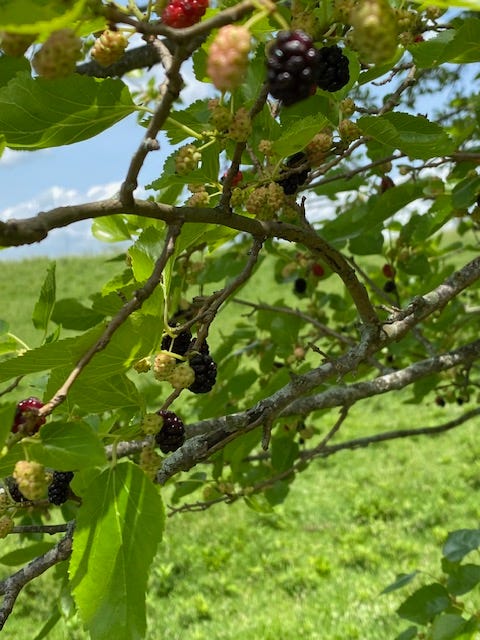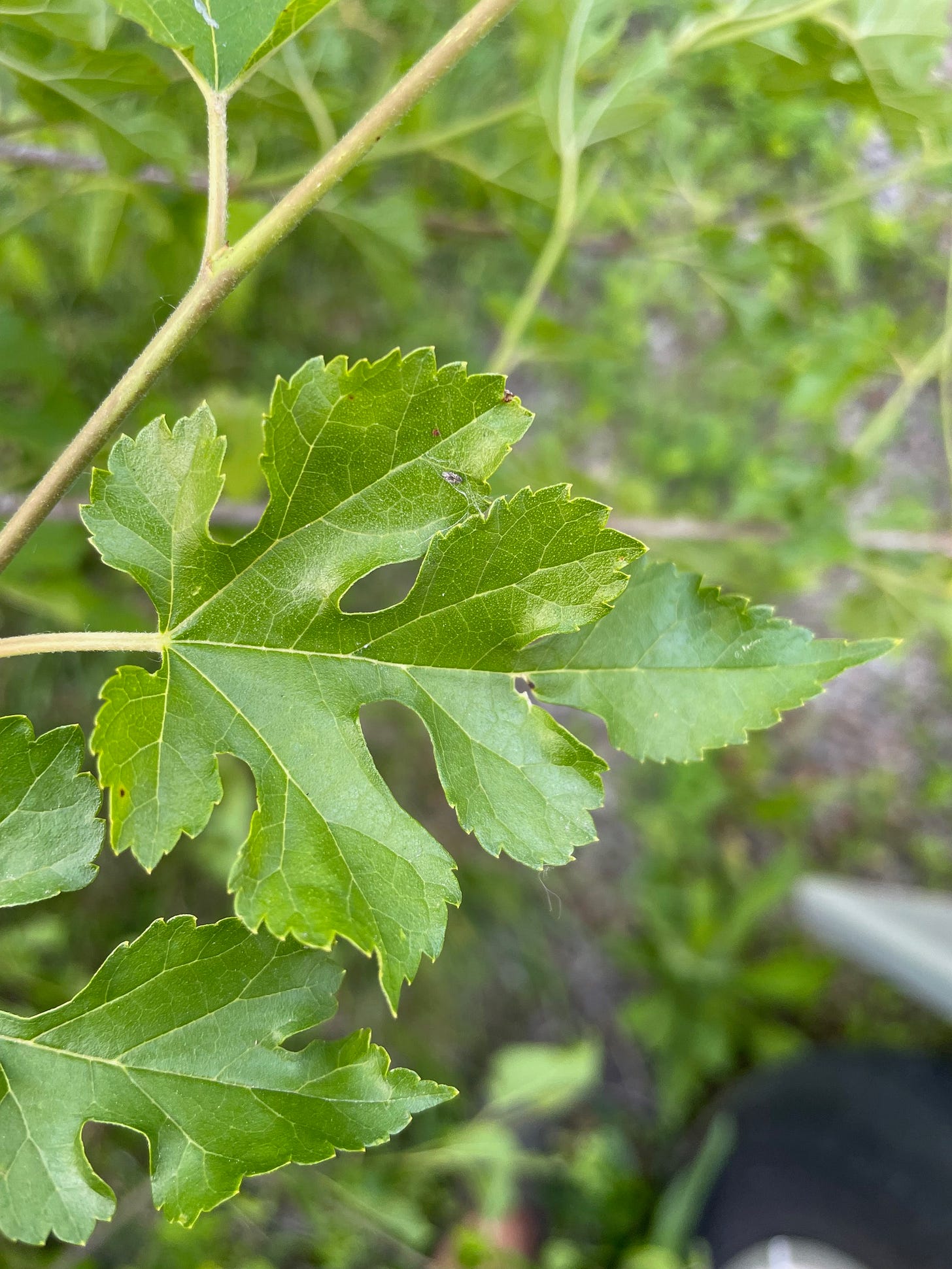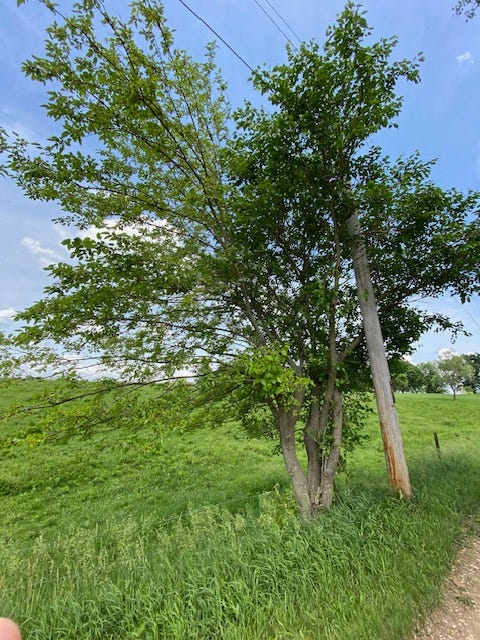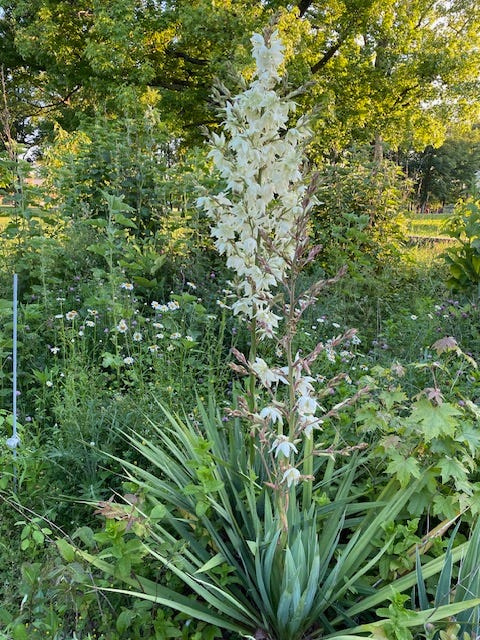If you’re seeing dark spots on the sidewalk, or maybe your vehicle, look up, and see if it’s a mulberry tree blessing you with its fruit. At weedom (midwest U.S. hardiness zone 6) the mulberries are ripening right now. Some of the mulberry species produce fruit in late spring, and some start a bit later in mid summer, depending on the tree and where you are, with the flush of berries continuing for about 6 weeks. Follow the birds and small wildlife to whatever trees appear to be growing blackberries, and share in the free food and medicine.
There are perhaps about 20 recognized mulberry species in the family Moraceae, but numerous ‘varieties’ exist since they have been cultivated for many centuries. Mulberries are related to breadfruit and jackfruit species. Four major species occupy North america, 2 of which are native, Morus rubra, the red mulberry is found mainly in the eastern half of the U.S. and Morus microphylla, occupies Texas, New Mexico and Arizona. Species imported from Asia are the Morus nigra, the black mulberry, and Morus alba, the white mulberry, found almost all over the U.S. The fairly rare black mulberry is seen in some southern states, and the highly invasive white mulberry occupies almost every state. This latter tree has been able to hybridize with other species, and may be wiping out the red mulberry which has been native to weedom. The main reason that the white mulberry is threatening to take over the U.S. is that it was imported centuries ago as an effort to bring silk manufacturing here. It’s the prime food of silk worms, (Bombyx mori) and we do occasionally see the huge adult silk moths here at weedom.
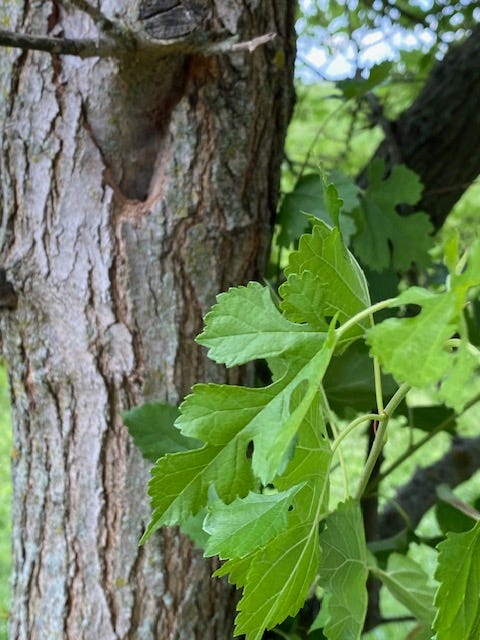
All of these mulberries produce edible fruit and possess medicinal qualities, so you need not be certain of the exact species or hybrid to make use of this tree. The leaves of mulberry are so polymorphous that distinguishing between mulberry species can sometimes be difficult. The shapes range from somewhat spade shaped to assymetric with a single lobe (mitten), or symmetric with multiple lobes. Rampant hybridization doesn’t help. There are a few fine points which can be used to determine if your mulberry trees lean more toward the red or the white species.
Leaf buds of white mulberry are smaller and plumper, and emerge from the node in alignment with the stem. The buds of red mulberry are larger, flatter and tend to lean off to one side with respect to the stem. Check here for some good comparative pictures.
Leaves of white mulberry are smaller (3-4 inches, 7-10cm) smooth and shinier on the upper side, and if there are any hairs, they’re limited to the major veins on the underside of leaves. The tips tend to be less pointed, the teeth a bit rounder, and the smaller veans appear less apparent. Leaves of red mulberry are larger, 4-10 inches (10-25 cm.) dull and rough textured on the top side, and with numerous hairs on the underside. Teeth are more finely serrated, tips of the leaves are more pointed, and the smaller veins are more apparent.
New twigs of red mulberry are more tan, and those of white mulberry are pinkish brown.
White mulberry is more of a sun lover, while red mulberry can be found as an understory tree, associated with such others as pawpaw trees. In wooded areas, the red mulberry can reach a height of 60 feet. White mulberry tends to be smaller.
Fruit of the white mulberry is more bunching and numerous than that of the red mulberry.
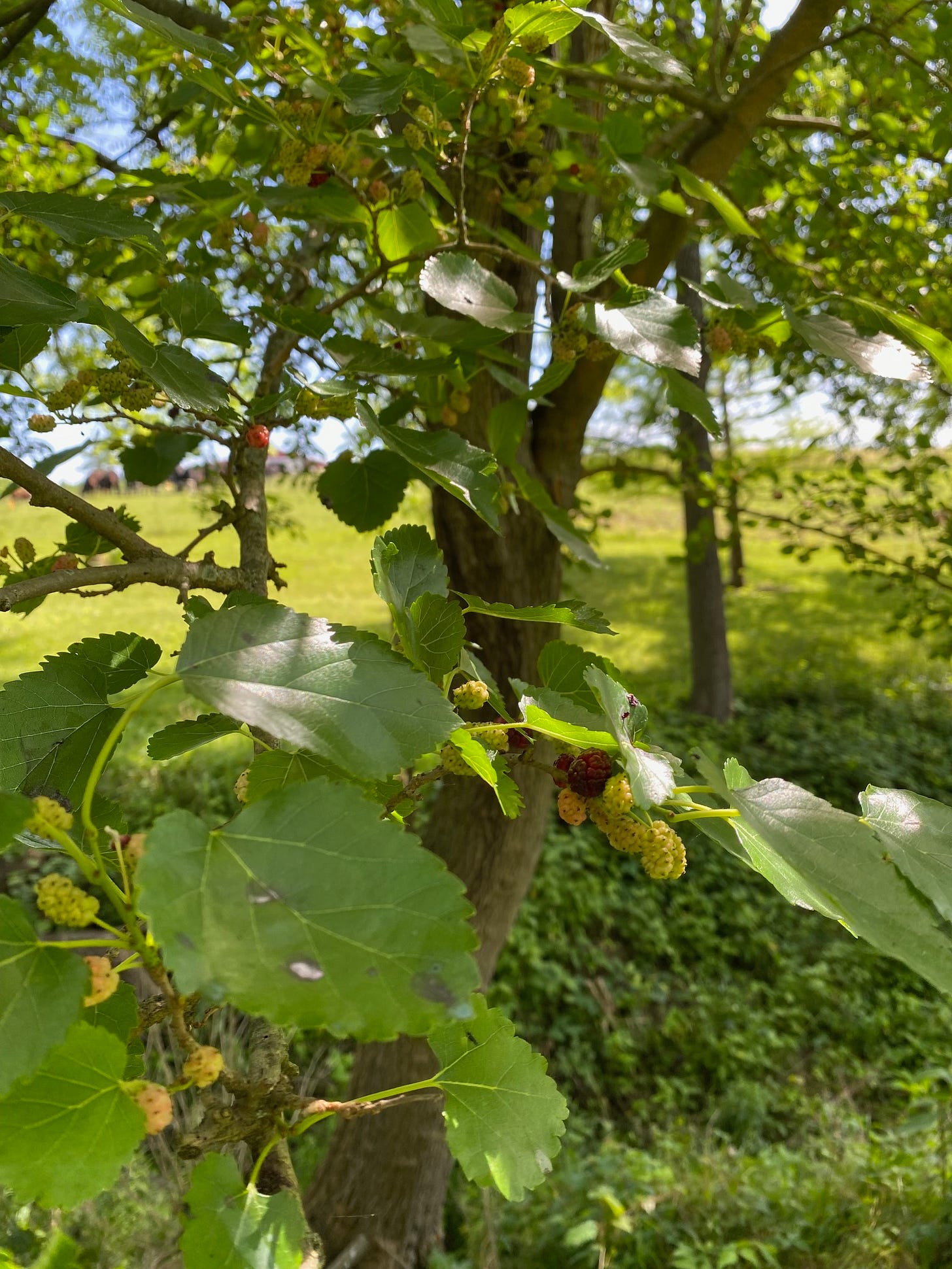
The red (slippery) elm and linden trees have leaves which generally resemble the red mulberry’s spade shaped foliage. Fortunately neither are a poison hazard so that mistakes are not likely harmful. Look for assymetry at the leaf base, and very short petioles on the elm. Sassafras is another tree with the three different kinds of leaves, but differ from mulberry with respect to smooth leaf margins and distinctive scent when the leaves are crushed.
Overall, the mulberry trees are pretty fast growing, and attractive to the permaculturalists who want to renovate some land pretty quickly, while obtaining food along with the remedial benefits. The wood is light but rather rot resistant, and is useful to build or carve smaller items. Be aware that if the younger branches are used for stakes, they might grow roots and turn into another tree. They’re a bit like willows that way.
The many parts of mulberry have much medicinal utility in Traditional Chinese medicine, TCM. Be aware that your mulberry pie might also deliver you from yin deficiencies. The fruit, twigs, leaves and root bark of mulberry have utility in TCM. These various parts and their constituents have been extensively studied for their effects in mitigating diabetes mellitus through numerous mechanisms.
If you use a tablespoon of dried mulberry leaves to make a tea, it’s going to taste good, but won’t do too much for lowering blood sugar. Leaves are medicinally mild and are eaten in food quantities. Younger leaves can be nibbled raw, are used as a pot herb, and are dried and powdered as a flour constituent. They also serve as animal fodder. The dried leaves have close to 20 percent protein content, and contain numerous vitamins and minerals. Remember that TCM makes serious use of herbs, and in that system, effective doses of mulberry range from 9 grams to 30 grams in the case of twigs, and from 4 to 10 grams in the case of leaves, root bark or 9-15 grams in the case of the dried fruit.
From the handy, dandy Chinese Barefoot Doctors Manual, and the realm of Chinese Herbology:
The mulberry fruit, (sang shen) provides a sweet and demulcent cooling effect which supports the yin aspects of the liver and kidneys. It also packs a load of vitamin C, lots of vitamins and anthocyanins, if you just want to eat it. It’s marketed in beverages in China to promone general health, immune function and longevity.
Mulberry leaves, (sang ye) are sweet, cooling, but with some counterbalancing bitterness. They address exogenously generated heat conditions such colds and flu, sore throught and cough. They are used to mitigate internal bleeding, inhibit various bacteria, and to manage and treat diabetes.
Root bark (sang bai pi) is also cooling and sweet, and it is used to address hot phlegm, which is the secretions due to infectious respiratory conditions. Root bark dispels these fluids as well as causitive pathogens. Root bark mitigates edema, functioning as a diuretic in removal of water, sodium and potassium.
Twigs (sang zhi) are cooling, bitter and sour. They address wind and dampness, and such hot conditions as rheumatic pain in the joints.
Bonus! Silkworm fecal matter, (can sha) after they eat the silkworm leaves, is used for its warming, sweet! acrid qualities to dispel painful wind, dampness obstruction in the extremities. It contains constituents with antiviral activity and hepatoprotective properties. No lie, insect poo is under study as a concentrated source of some useful medicinal constituents. The Bombyx mori, silkworm, concentrates the various flavonoids, alkaloids, etc. which are known to address blood sugar issues, hyperlipidemia, tumors, ulcers, so its manure has become medicine.
Perhaps mulberries are the acceptable way to cheat on your diet, without disrupting your metabolism and negating all the effort. Pick some free-berries today, and replace, or augment the blackberries, raspberries or blueberries in your favorite recipe. The mulberries themselves are fairly high in fiber and low in calories.
The leaves really do have a nice taste, and the tea is a pleasant cool drink. A couple weeks ago, we had to sacrifice a couple of weedy white mulberry bushes which had sprung up in the middle of the garden, and prevented total loss by harvesting and drying the leaves. Some will go for tea, and some leaf powder will serve as filler in some cookies, or other baked violations of perfect dietary compliance. (We have been known to use maca powder in desserts too.)
As for the poo….. we haven’t gone there yet. But if any of you adventuresome souls can tell us some stories, we are all ears!
If you see these white blooms… they’re tasty. Yucca is truly a weed here.
Not sure when the next stack will drop, due to another baby coming….. But we will post as soon as possible.





